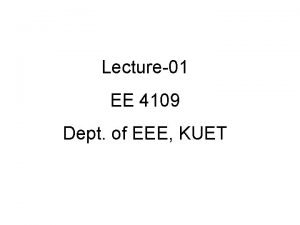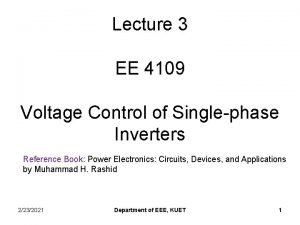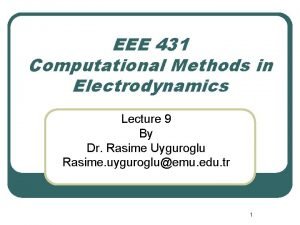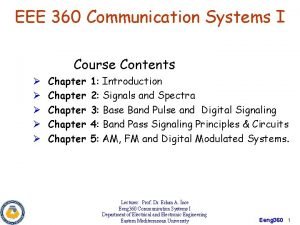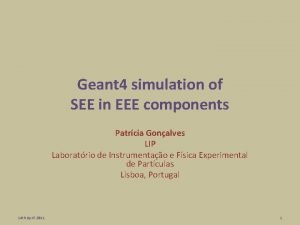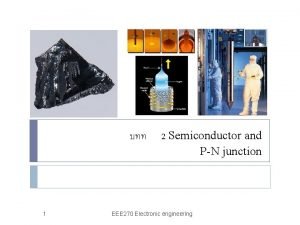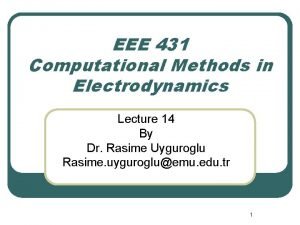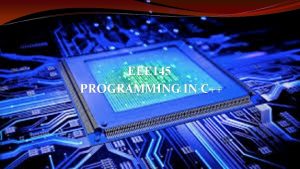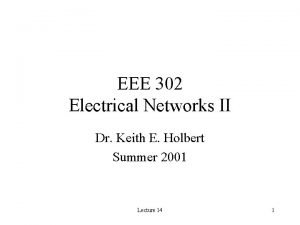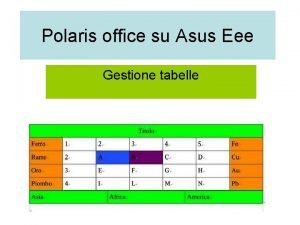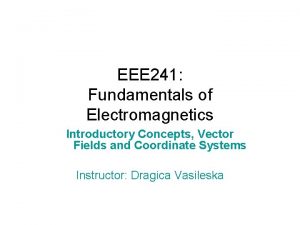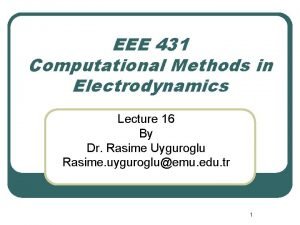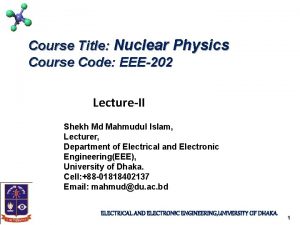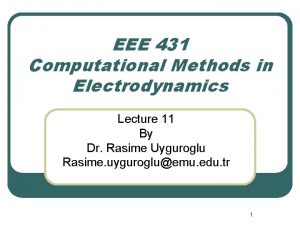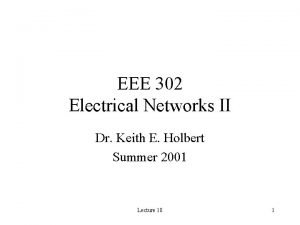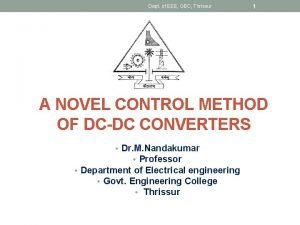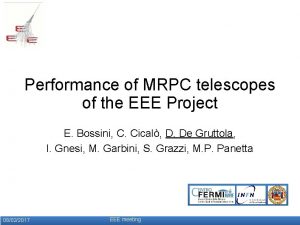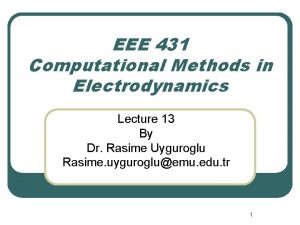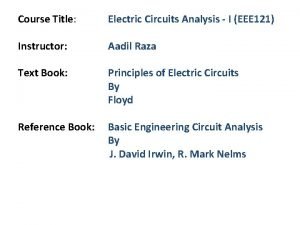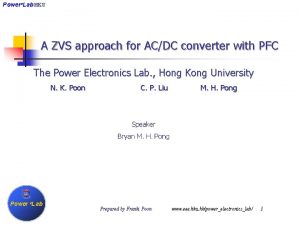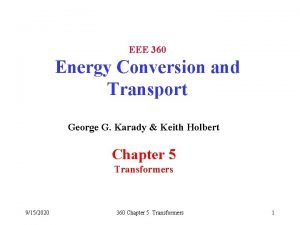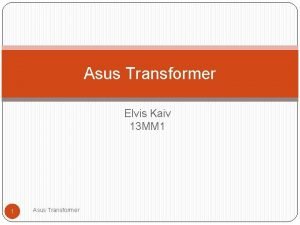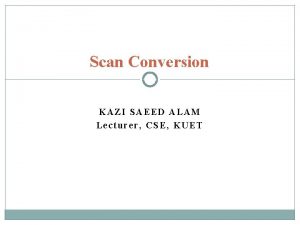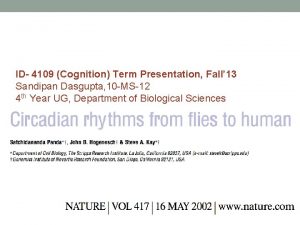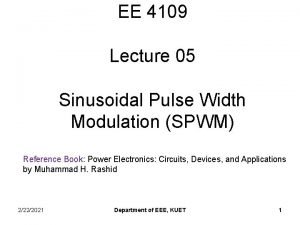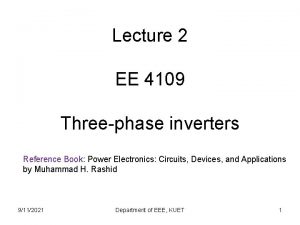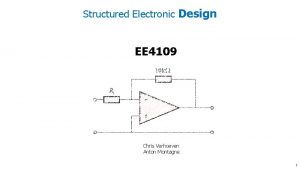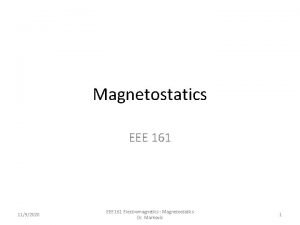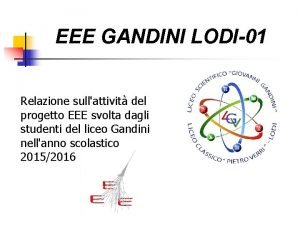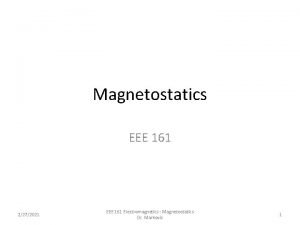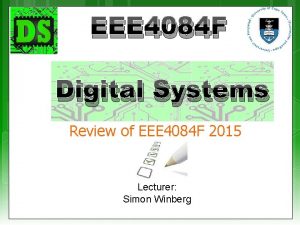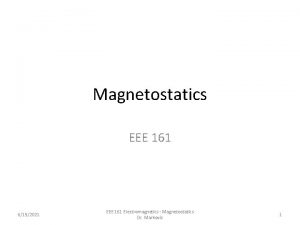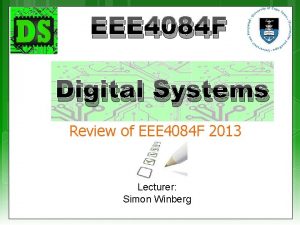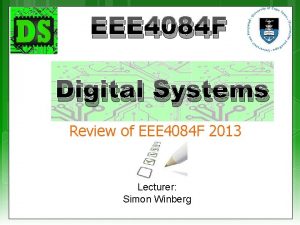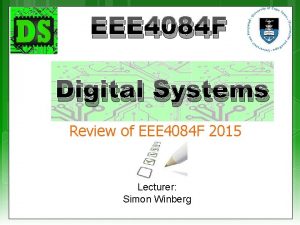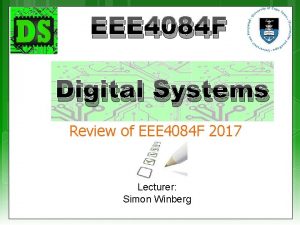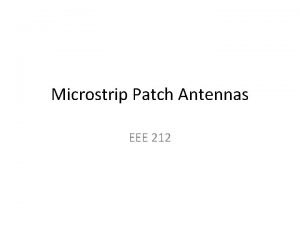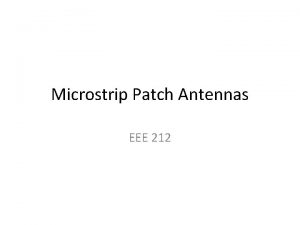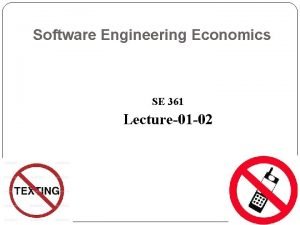Lecture01 EE 4109 Dept of EEE KUET This




























- Slides: 28

Lecture-01 EE 4109 Dept. of EEE, KUET

This lecture is for Learning Outcome 3 (LO 3): At the end of the course students will be able to identify and design DC-AC converters (inverters) and their gate driver circuits q Basic of inverter q Principle of operation of inverters q Performance parameters of inverters

Inverter basic DC to AC converters are known as inverters The function of an inverter is to change a dc input voltage to a symmetric ac output voltage of desired magnitude and frequency The output voltage could be fixed or variable at a fixed or variable frequency. Variable output voltage can be obtained by varying the gain of the inverter.

Inverter basic Inverter gain= ac output/dc input (which is controlled by using PWM) Applications: variable speed ac motor, induction heating, IPS, and UPS Classification: single-phase and three-phase

Single-phase half-bridge inverter

Operational Details 3 -wire DC source • • Consists of 2 choppers, 3 -wire DC source Transistors switched on and off alternately Need to isolate the gate signal for Q 1 (upper device) Each provides opposite polarity of Vs/2 across the load

Q 1 on, Q 2 off, vo = Vs/2 Peak Reverse Voltage of Q 2 = Vs

Q 1 off, Q 2 on, vo = -Vs/2

Voltage and current Waveforms

Look at the output voltage rms value of the output voltage, Vo

rms value of the fundamental component

When the load is highly inductive

Turn off Q 1 at t = To/2 Current falls to 0 via D 2, L, Vs/2 lower + Vs/2 -

Turn off Q 2 at t = To Current falls to 0 via D 1, L, Vs/2 upper + Vs/2 -

Load Current for a highly inductive load Transistors are only switched on for a quarter-cycle, or 90

Fundamental Output Power In most cases, the useful power

Performance Parameters • Harmonic factor of the nth harmonic (HFn) for n>1 Von = rms value of the nth harmonic component V 01 = rms value of the fundamental component

Performance Parameters (continued) • Total Harmonic Distortion (THD) • Measures the “closeness” in shape between a waveform and its fundamental component

Performance Parameters (continued) • Distortion Factor (DF) • Indicates the amount of HD that remains in a particular waveform after the harmonics have been subjected to second-order attenuation. for n>1

Performance Parameters (continued) • Lowest order harmonic (LOH) • The harmonic component whose frequency is closest to the fundamental, and its amplitude is greater than or equal to 3% of the amplitude of the fundamental component.

Single-phase full-bridge inverter

Operational Details • • Consists of 4 choppers and a 3 -wire DC source Q 1 -Q 2 and Q 3 -Q 4 switched on and off alternately Need to isolate the gate signal for Q 1 and Q 3 (upper) Each pair provide opposite polarity of Vsacross the load

Q 1 -Q 2 on, Q 3 -Q 4 off, vo = Vs + Vs -

Q 3 -Q 4 on, Q 1 -Q 2 off, vo = -Vs - Vs +

When the load is highly inductive Turn Q 1 -Q 2 off – Q 3 -Q 4 off

Turn Q 3 -Q 4 off – Q 1 -Q 2 off

Load current for a highly inductive load Problems 6. 1, 6. 2, and 6. 3 from M. H. Rashid’s book

End of Lecture 1
 Eee kuet
Eee kuet Kuet angle
Kuet angle Kuet cse
Kuet cse Eee 431
Eee 431 Analog communication
Analog communication Eee components
Eee components Eee
Eee Eee 431
Eee 431 Eee 145
Eee 145 Eee 302
Eee 302 Eee office
Eee office Schematic arrangement of diesel power plant
Schematic arrangement of diesel power plant Dot product
Dot product Eee 431
Eee 431 Eee 322
Eee 322 Eee202
Eee202 Android asus eee pc
Android asus eee pc Eee 431
Eee 431 Eee 302
Eee 302 Eee office
Eee office String conversion
String conversion Eee
Eee Lecc
Lecc Eee 431
Eee 431 Eee 121
Eee 121 Powere
Powere 3 phase short circuit
3 phase short circuit Tahvel.edu.eee
Tahvel.edu.eee Metu math 117
Metu math 117
